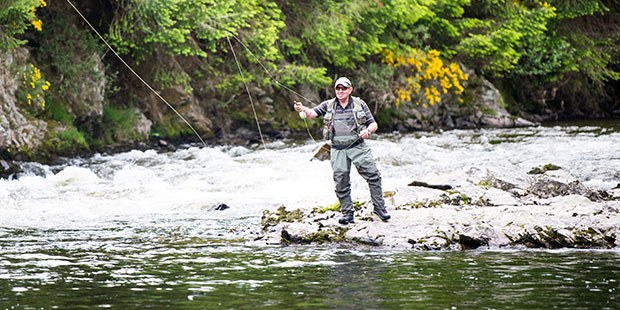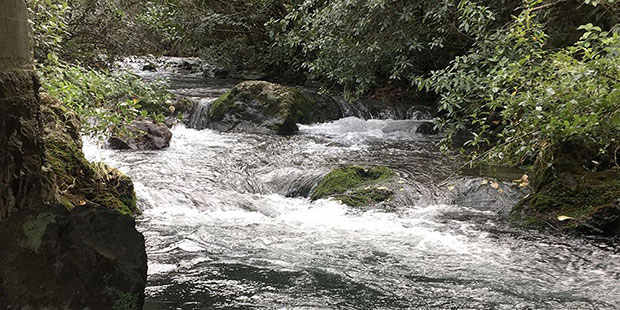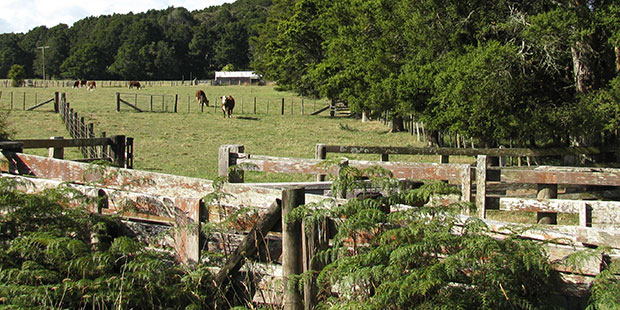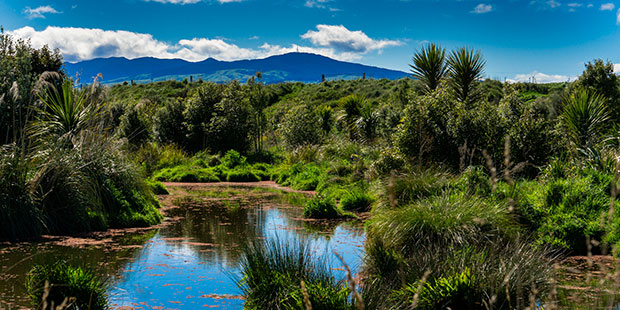Wetland really rings a bell for dairy farmer
"Time to give something back" sees Grant Bell build 4ha wetland.


Grant Bell has fashioned an impressive wetland on his dairy farm and has this advice for other farmers looking to do the same: Do a little, often.
Bell, who has a 150ha farm, milking 525 cows near Palmerston North, has developed a major wetland on the farm – starting out at 2.5ha and extended now to 4ha, about four rugby fields in size.

Grant Bell & David Burger. Image / Supplied.
Grant Bell & David Burger. Image / Supplied.
It’s a fine example of what can be done and has attracted the admiring interest of DairyNZ, whose research and resources are aimed at helping farmers up and down the country to farm sustainably.
Farmers are being asked to protect, restore, and construct wetlands – described as “the kidneys of the land" as they filter, absorb and transform contaminants before they reach streams, rivers and lakes.
Recent scientific studies, undertaken by NIWA for DairyNZ, found natural seepage wetlands on farms can reduce the amount of nitrate passing through them by up to 75-98 per cent. Nitrate can cause problems in waterways by stimulating excessive growth of algae and water plants and, at high concentrations, affect the health of insects living in streams.

Image / Supplied.
Image / Supplied.
Bell’s story stems from a family belief that it was time to “do the right thing”: “My family has owned this farm for 25 years and it’s been good to us. We all thought it was time to give something back.
“We had a perfect opportunity sitting right in front of us and I guess we were a bit lucky,” he says. “We had a disused wasteland and gully sitting right at the place where about 90 per cent of the farm’s water, run-off and drains pass through before exiting the farm – it really lent itself to wetland development.”
That said, wetland construction is no easy or quick task. Bell took three years to construct the first stage of 2.5ha and two years to add the additional hectare-and-a-half. About 12,000 plants have been installed. Oh, and it cost roughly $100,000 over those five years.

Image / Supplied.
Image / Supplied.
That is not a sum guaranteed to delight farmers, many of whom believe the government’s requirements on freshwater will cause them plenty of expense – but Bell says the best way to embrace wetland construction or restoration is “do a little bit at a time, often”.
“We started after a good year, when there was a good payout and we had a little bit of spare cash – but we worked away slowly at it, just plugging away bit by bit, over the next two years. It’s best if you just chip away at it, so it doesn’t become this big job – and trying to do it all in one hit can be very expensive.
“For the first 2.5ha, we funded it ourselves as we didn’t qualify for help from the Horizons Regional Council. They fund riparian planting, not wetlands – but the second part of the wetland runs along a drain so it qualifies for funding and we were able to split the cost 50-50 with the council.”
Bell says he feels good about creating the wetland: “There’s no doubt it’s the right thing to do. Farming has been good to us and good to New Zealand as a whole, so it’s important to pay something back. We wanted to do our bit.”

Grant Bell. Image / Supplied.
Grant Bell. Image / Supplied.
Over 90 per cent of the country's wetlands have been drained in the past 200 years, with North Island regions most affected, with the drainage undertaken to make land farmable. Dairy farming often takes place in flatter, lower-lying areas – often the terrain with the right conditions for re-establishing wetlands.
Bell says he still has work to do on the wetland, even though it will not spread beyond its current 4ha size. There is maintenance work to do and he says about 20 per cent still has room for planting with the same mixture of natives and exotics that have been planted there so far.
The exotics are intended to encourage more bird life to return to the area, as they produce more berries and nectar for more months than some natives, Bell says.
The exotics are intended to encourage more bird life to return to the area, as they produce more berries and nectar for more months than some natives, Bell says.

Image / Supplied.
Image / Supplied.
Some nitrate is taken up by plants but the main process of treating nitrogen entering a wetland is de-nitrification – bacteria convert nitrate into nitrogen gas before it can reach a waterway. Wetlands work by creating the right environment for these bacteria to thrive and supplying organic matter to fuel this process.
The more evenly water flows through the wetland and the longer it stays in the wetland, the more nitrate will be removed.
Even though Bell’s wetland has been built over five years, Bell says he has not yet been able to measure water quality. The process of obtaining accurate measurement is complex and can be very time-consuming and expensive.
Based on recent NIWA/DairyNZ guidance, such a constructed wetland would be expected to remove around 30-50 per cent of the nitrogen passing through it, with the nearby Manawatu River to benefit from the Bells’ natural filtration system.





